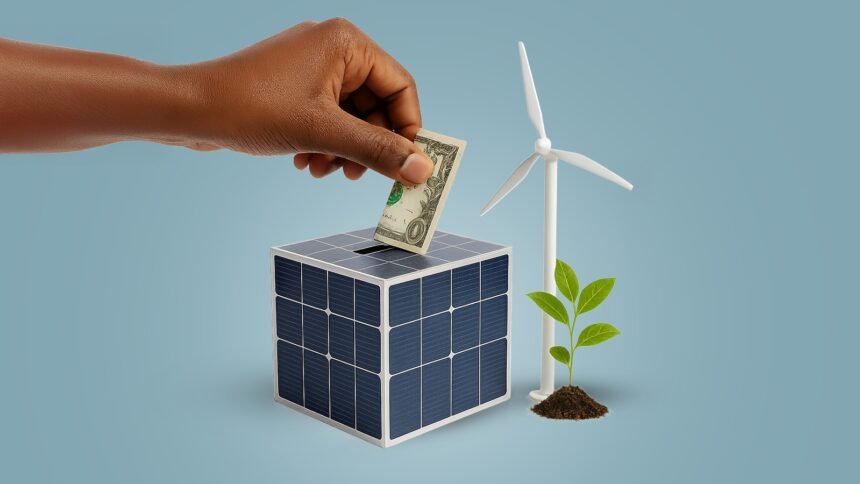Africa has a habit of being on the receiving end of climate news — droughts, floods, and reports of how the continent will suffer most despite contributing the least to global emissions. But this month, African leaders decided to flip the script. In a bold move announced at a major climate summit in Addis Ababa, they committed to mobilizing $50 billion a year for climate action. Not pledges from foreign donors. Not lofty speeches waiting on Western goodwill. This is Africa raising its own stake in the fight for a livable planet — and asking the world to join, not lead.
The initiative, called the African Climate Solutions Compact, is as ambitious as it is urgent. Its architects envision an annual pipeline of green investments in solar farms, wind corridors, reforestation projects, electric public transport, and climate-resilient agriculture. The goal is clear: make Africa not just a victim of the climate crisis but a key player in solving it. “We cannot wait for charity when the floods are already here,” one summit delegate declared. “We will build our own future, dollar by dollar, project by project.”
The $50 billion target is audacious — but it’s also pragmatic. Africa has the fastest-growing population in the world, and its cities are expanding at a breakneck pace. If that growth is powered by coal plants and gas-guzzling cars, global efforts to limit warming to 1.5°C will fail. But if it’s powered by solar grids, green hydrogen, and regenerative farming, Africa could leapfrog the dirty industrial stages that Europe and North America went through and become a model for sustainable development.
Economists at the summit pointed out that Africa already holds many of the world’s natural solutions to climate change. Its forests, especially the Congo Basin, are massive carbon sinks. Its deserts have some of the highest solar irradiance on earth. Its rivers can generate hydropower for millions. Yet despite this potential, Africa currently attracts less than 3% of global climate finance. The new initiative seeks to change that, not just by attracting more external funding but by putting African capital — from sovereign wealth funds, public budgets, and private investors — on the table first. It’s a political message: we are not beggars at the climate table; we are stakeholders.
But turning ambition into action will be hard. Mobilizing $50 billion annually means building pipelines of bankable projects, reducing bureaucratic red tape, and tackling corruption that often scares off investors. It also means making sure the benefits reach local communities and not just foreign contractors or urban elites. Past projects have been criticized for displacing villagers, fencing off land, or failing to deliver promised jobs. The summit acknowledged these challenges and promised mechanisms for transparency, citizen participation, and independent monitoring.
Civil society groups are cautiously optimistic. For years, African negotiators have complained that global climate summits are talk shops where rich countries pledge billions but deliver little. This homegrown financing plan shifts the dynamic. “It’s a game changer if done right,” said a Nairobi-based environmental activist. “When we put up our own money, we set the terms — and that means solutions designed for African realities, not donor agendas.”
The geopolitical dimension is also intriguing. By committing to such a massive investment, Africa is signaling that it wants a bigger seat at global climate negotiations. The move could pressure developed nations to finally meet their own $100 billion per year pledge to developing countries — a promise that has been broken repeatedly since 2009. Some analysts suggest this could even shift alliances, as Africa courts new partners like China, India, and Gulf states to co-finance green megaprojects.
Skeptics warn that big announcements don’t always lead to big outcomes. Africa has a history of grand development plans that stalled in the face of political wrangling, debt crises, or shifting priorities. Still, the mood at the Addis Ababa summit was palpably hopeful, even defiant. The image of African presidents, business leaders, and youth activists standing together to launch a plan of this scale was powerful. It told the world: Africa is not waiting to be saved.
The next test is implementation. The first tranche of projects will be unveiled early next year, including a pan-African solar grid initiative stretching across the Sahel, a reforestation campaign aiming to restore 50 million hectares of degraded land, and a clean-energy financing facility to backstart electric bus fleets in major cities like Lagos, Nairobi, and Cairo. If these succeed, they could spark a domino effect of green growth across the continent.
For now, the message is simple and strong: Africa is tired of being seen only as the world’s climate victim. It is positioning itself as a laboratory for climate solutions — and it’s willing to put billions on the table to prove it. Whether the rest of the world matches that energy is another question. But Africa’s bet is clear: the future will be green, or it will not be at all.










